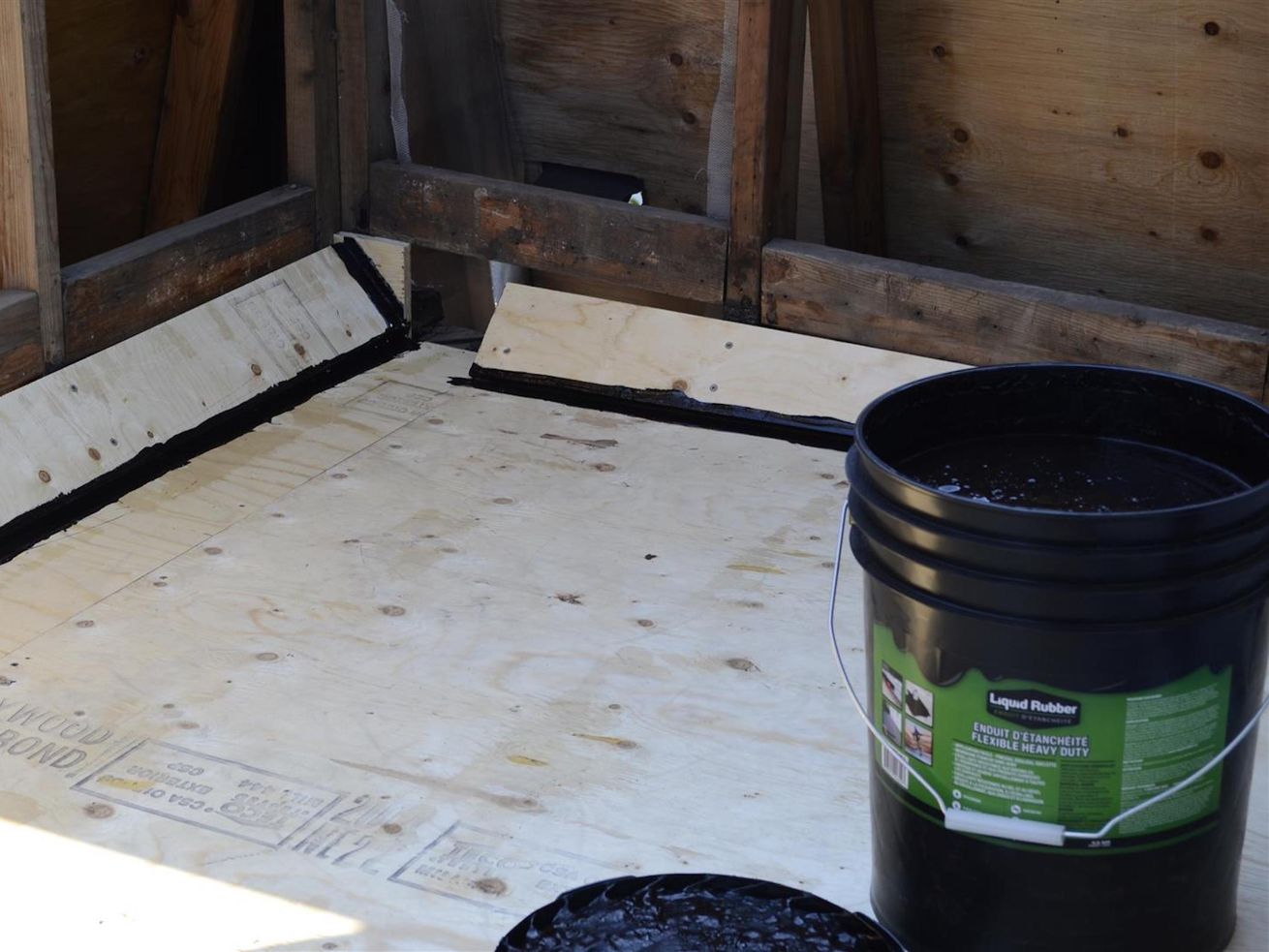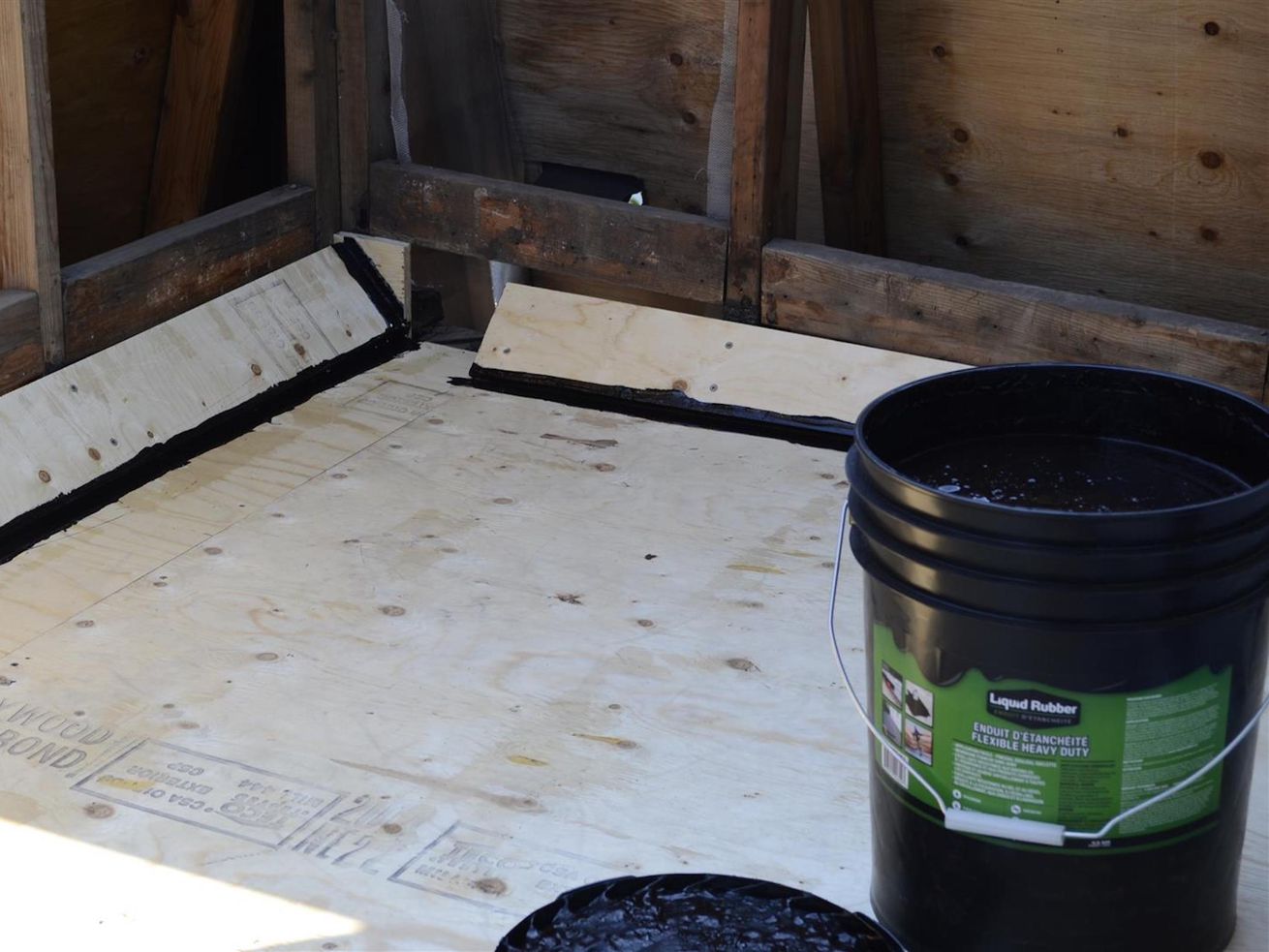Best Sealants for Roof Leaks of 2021

>

Courtesy Liquid Rubber
Sealants cover roof leaks and protect the remaining area from water and sunlight damage. To learn more about preserving your roof, read our review on the best roof sealants.
Roof sealants not only cover roof leaks, but they also provide a protective layer to prevent water and sunlight penetration. These sealants come in many forms, including liquid in a paint can, liquid in a spray can, liquid in a caulk gun, and adhesive tape. They’re also made of a variety of materials, including rubber and polyurethane. To learn more about which type is best for your application, read our review on the best sealants for roof leaks.
Dicor Self-Leveling Lap Sealant
This product comes with four caulking tubes of sealant. The tubes have pointed applicators to make piping the sealant around the roof’s edges, air vents, vent pipes, leaks, and other areas easier. It also works on roof shingles made of a variety of materials, including vinyl, aluminum, and wood.
Check price on Amazon
Liquid Rubber Waterproof Sealant
This five-gallon bucket of liquid rubber has enough product to provide several layers of sealant to a large roof. Once it’s applied, it protects your roof from both water and sunlight. It also has a water-based formula that’s free of solvents, volatile organic compounds, and odors, making it safe for you and the environment.
Check price on Amazon
Flex Seal Liquid Rubber in a Can
This liquid rubber provides both water and UV protection and is non-toxic. Since it comes in a 32-ounce, or 0.25-gallon, bucket, it’s a good choice for smaller roofs or minor repairs. It also has a white color instead of a black one, making it better at repelling UV rays and keeping your home cool.
Check price on Amazon
Gorilla Waterproof Patch & Seal Tape
This sealant comes in the form of tape. Its adhesive backing sticks to leaks or vulnerable seams on your roof to protect them from water. This particular product comes with one roll of white tape, but it’s also available in a black color and packs of other amounts, allowing you to match the color of the tape to the color of your roof and complete larger projects.
Check price on Amazon
Flex Seal Spray Rubber Sealant Coating
This sealant is also liquid rubber, but instead of coming in a paint can, it comes in a spray can, making application faster and easier. It comes in a pack of two 14-ounce canisters and has a clear color, but it’s also available in other colors, such as off-white and white. Like sealant tape products, it’s best for minor roofing repairs, such as leaks and vulnerable edges, because of its small size.
Check price on Amazon
Types of Roof Sealants
Sealants are separated into five categories based on what they’re made of.
crylic
Acrylic sealants are designed to deflect UV rays, making them popular in the South and West where roof sun damage is common. They also have a moderate amount of moisture resistance, making them best for sloped roofs because flat roofs tend to create pools of water that acrylic isn’t strong enough to withstand.
Polyurethane
This material is highly resistant to water but not as resistant to sunlight, making it best for areas that get a lot of rain and snow as opposed to sunshine.
Silicone
Silicon-based sealants offer both water and sunlight protection, making them good for protecting your roof from any weather condition. The main downside to this type of sealant is that it’s expensive, preventing it from being financially feasible for homeowners on a budget to buy enough of it to cover their entire roof.
Rubber
This type of sealant comes as a liquid form of rubber. It’s usually water-based to thin the rubber and make it easier to apply. It protects against both sun and rain.
Tape
While most other options are liquid, this type of sealant comes as strips of moisture-resistant material. It has an adhesive backing that you stick onto the roof to cover minor leaks or seal seams. It’s an affordable sealant option, but because of its small size, it’s not meant to cover an entire roof.
Buying Guide
Each roof sealant will vary in terms of water resistance, UV reflectivity, longevity, and application. Read our buyer’s guide below to learn more about these factors, as this will help inform your purchasing decision.
Water Resistance
Every sealant provides some level of water resistance, but rubber, silicone, and polyurethane have a waterproof quality, allowing your covered roof to withstand heavy rain and standing water. However, in order to create a completely waterproof barrier, your sealant will require several layers. Its directions will instruct you on how to do this.
UV Reflectivity
A sealant that can reflect sunlight helps to keep your house cool. This is especially useful in the summer months, as it can decrease air conditioning use and result in a lower electricity bill. Rubber, acrylic, and silicone sealants have the highest reflectivity levels. The color of the applied sealant will also play a role in its reflectivity, with lighter colors being better at reflecting than darker colors.
Longevity
Each sealant has a varying lifespan, but most last 10–20 years. Tape sealants last this long with one layer of tape, but the remaining liquid types may require several coats, as a thicker coating lasts longer. Proper application is another factor that affects longevity. If you don’t follow the manufacturer’s instructions, you’ll decrease the sealant’s life. Most manufacturers warn against applying their sealant in cold weather, to a wet or dirty roof, or before a storm when it hasn’t had enough time to cure.
pplication
Different sealants have different application methods. The tape type of sealant has a self-explanatory application process, but the remaining types may come in a paint can, spray can, or caulk tube. The paint can method gives you a thick layer of sealant along with the quantity to apply it to a large surface area. Spray cans and caulk guns take less work, but they come in smaller quantities, making them best for small leaks.
Frequently Asked Questions
What does the ISO certification on my roof sealant mean?
The International Organization for Standardization (ISO) created standards for testing how well a sealant protects a surface from corrosive elements. The scale ranges from C1 to C5, with C1 offering minimal protection and C5 offering maximal protection. It’s up to you to determine how much protection you want your sealant to offer, but if you live in an area with harsh conditions, we recommend looking into a C5 sealant.
Can you remove roof sealant?
Yes. You can remove liquid sealant with a plastic putty knife. If you’re having trouble peeling your tape sealant off with your hands, you can also use a putty knife. However, be careful not to damage the shingles underneath.
How long does it take for a roof coating to dry?
It depends on the sealant’s formula and the weather at the time of application, but most liquid sealants will take between eight and 24 hours to dry.
What is the difference between solvent-based and water-based roof sealants?
Solvent-based sealants are highly resistant to the elements, but they’re more expensive and take more effort to apply because of their thick consistency and requirement of wearing a respirator. Water-based sealants are less resistant to the elements, degrading faster and requiring more frequent touch-ups. However, they’re more cost-effective and easier to apply.
To share feedback or ask a question about this article, send a note to our Reviews Team at [email protected]
Did you miss our previous article…
https://www.tampa-bay-homes-guide.com/?p=113
